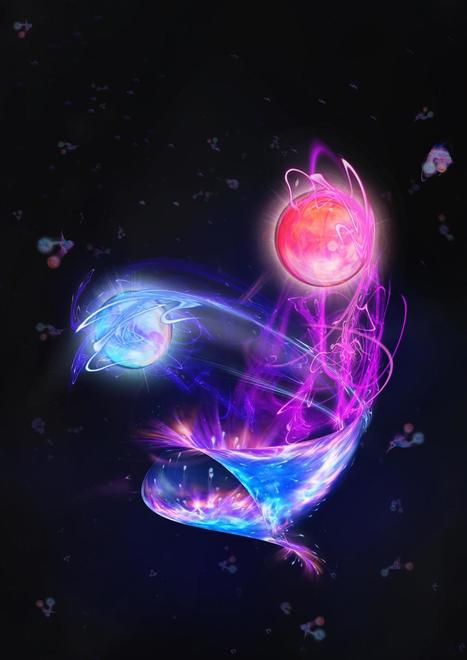Physicists in Innsbruck have realized the first quantum simulation of lattice gauge theories, building a bridge between high-energy theory and atomic physics. In the journal Nature, Rainer Blatt's and Peter Zoller's research teams describe how they simulated the creation of elementary particle pairs out of the vacuum by using a quantum computer.
Elementary particles are the fundamental buildings blocks of matter, and their properties are described by the Standard Model of particle physics. The discovery of the Higgs boson at the CERN in 2012 constitutes a further step towards the confirmation of the Standard Model. However, many aspects of this theory are still not understood because their complexity makes it hard to investigate them with classical computers. Quantum computers may provide a way to overcome this obstacle as they can simulate certain aspects of elementary particle physics in a well-controlled quantum system.
Physicists from the University of Innsbruck and the Institute for Quantum Optics and Quantum Information (IQOQI) at the Austrian Academy of Sciences have now done exactly that: In an international first, Rainer Blatt's and Peter Zoller's research teams have simulated lattice gauge theories in a quantum computer. They describe their work in the journal Nature.
Simulation of particle-antiparticle pairs using a quantum computer
Gauge theories describe the interaction between elementary particles, such as quarks and gluons, and they are the basis for our understanding of fundamental processes. "Dynamical processes, for example, the collision of elementary particles or the spontaneous creation of particle-antiparticle pairs, are extremely difficult to investigate," explains Christine Muschik, theoretical physicist at the IQOQI. "However, scientists quickly reach a limit when processing numerical calculations on classical computers. For this reason, it has been proposed to simulate these processes by using a programmable quantum system." In recent years, many interesting concepts have been proposed, but until now it was impossible to realize them. "We have now developed a new concept that allows us to simulate the spontaneous creation of electron-positron pairs out of the vacuum by using a quantum computer," says Muschik.
The quantum system consists of four electromagnetically trapped calcium ions that are controlled by laser pulses. "Each pair of ions represent a pair of a particle and an antiparticle," explains experimental physicist Esteban A. Martinez. "We use laser pulses to simulate the electromagnetic field in a vacuum. Then we are able to observe how particle pairs are created by quantum fluctuations from the energy of this field. By looking at the ion's fluorescence, we see whether particles and antiparticles were created. We are able to modify the parameters of the quantum system, which allows us to observe and study the dynamic process of pair creation."

Δεν υπάρχουν σχόλια:
Δημοσίευση σχολίου
NO COMMENTS!